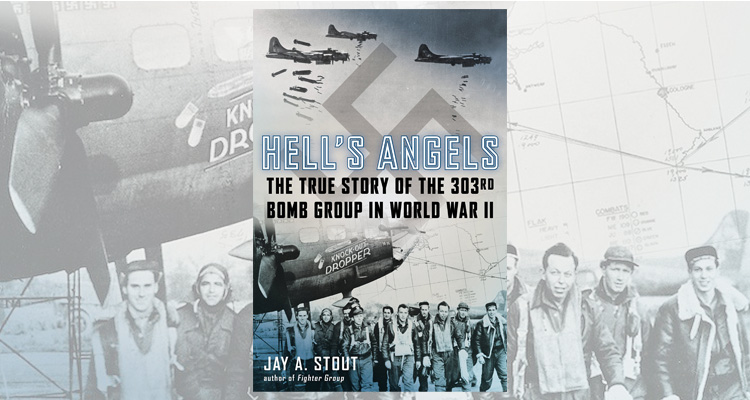HELL’S ANGELS: The True Story of the 303rd Bomb Group in World War II, by Jay A. Stout, Berkley Publishing, New York, N.Y., 2014, $27.95.
Reviewing a good book, or even a bad book, is relatively easy, particularly since I never review a bad book, being only too aware of how a stinging review makes an author feel.
Reviewing a great book is something else altogether, and that makes this analysis of Hell’s Angels very difficult, for it is truly a great book. Jay Stout chooses one of the most important bomb groups of World War II in terms of the time in which it flew and the successes that it scored. He then dissects that group’s equipment, procedures, personnel, victories and defeats in a way not previously done.
Stout’s technique immediately poses two questions, one obvious and one that has to be pondered. The first is why more books are not done in a similar manner. The answer very probably is the enormous research required, and the discrimination needed to select the most important elements. The second and more important question is whether a nation capable of creating a 303rd Bomb Group from such scant material in such a short period of time during WWII is still able to do so in today’s environment.
Stout’s task would have been far more difficult if he did not write so well. As it is, he manages to combine the overall story of a mammoth city-destroying organization created from the raw material of a Depression-ridden America with the highly personalized account of the men who flew their colorfully named B-17s into the heart of Nazi Germany. He vividly portrays the battle from its early days, when the Luftwaffe was far more powerful and experienced, and the 303rd was at the beginning of its learning curve. He carries the long, hard story, with its many casualties and triumphs, through to the last days of the war. At that point the German fighters might have been less effective, but the dangers of heavyweight takeoffs, midair collisions and ever-present flak still took their toll.
Stout assembles his story around the real but too often overlooked building blocks of a deadly efficient combat unit. He covers the duties of the support groups that were so vital to success, including maintenance, supply, administration, etc. He also paints very human portraits of the flight personnel as individuals, as well as essential crew members of the 10-man weapon system that was the B-17. This is truly an excellent book, a model for researchers and writers, and a treat for readers.
Walter J. Boyne





